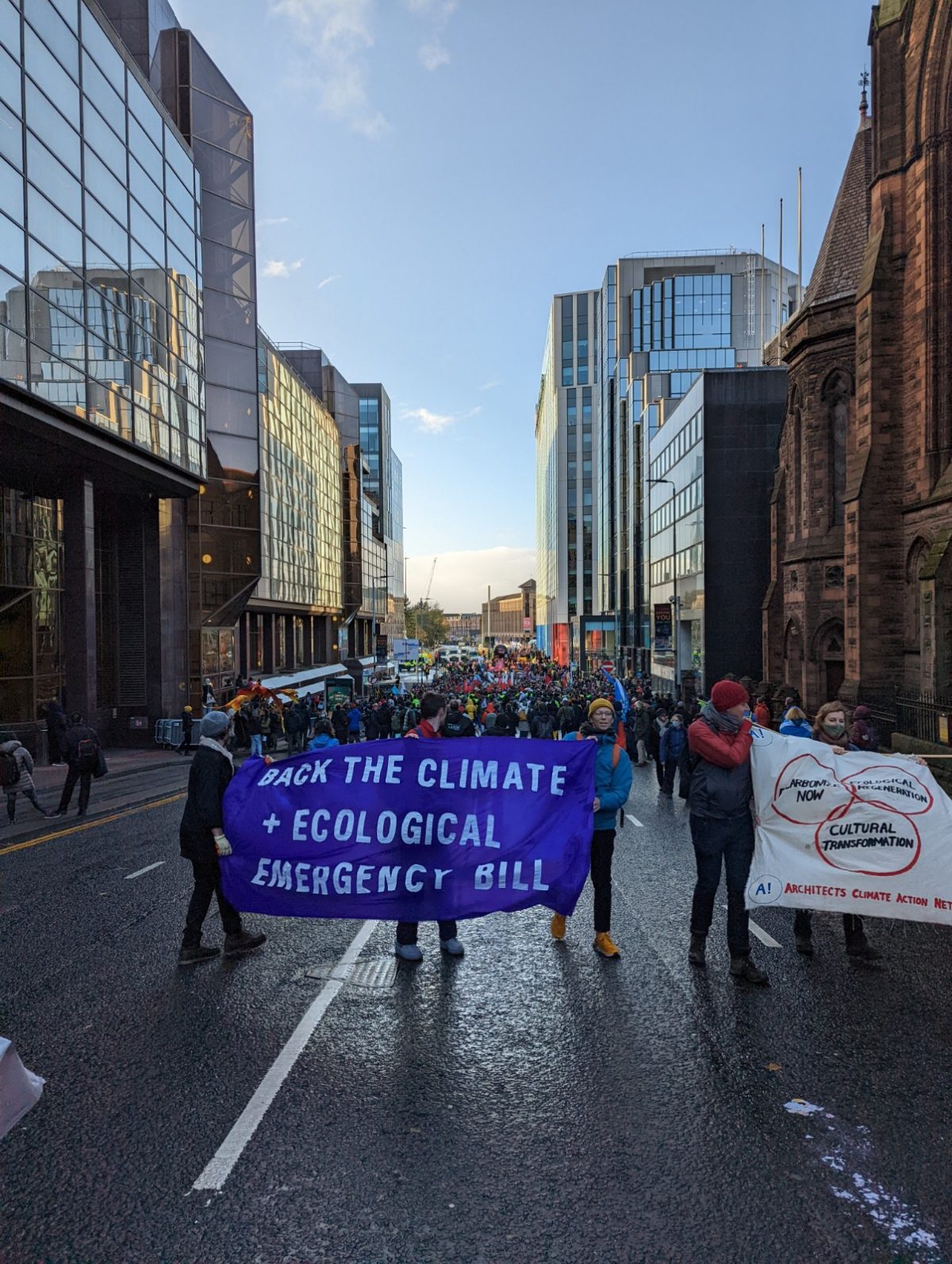
Decarbonisation: Time To Act!
Blog by Thierry Lye, Architect, Austin-Smith:Lord
Many of us have been receiving an exceptionally high amount of digital content regarding the climate crisis the world is facing, thanks to the COP26 conference that took place in Glasgow. Every major news outlet was covering daily news from the Blue Zone of the SEC Campus, intended to provide thorough coverage of political news and world leaders. Royal Institute of British Architects (RIBA) also hosted a Built Environment Summit in partnership with Architects Declare a week before COP26. The Summit highlighted the high percentage (38%) of global energy-related greenhouse gas emissions associated with the built environment, whilst Architects Declare emphasised the twin crises of climate breakdown and biodiversity loss and its consequence if we don’t act immediately. We are now much better equipped with vital facts and figures. The burning question is – what can we do, both as individuals living on this planet, and as a collective will within the built environment – before it is too late?
The first word that came to my mind about climate crisis is decarbonisation. It is commonly used to describe the process of removing and reducing carbon dioxide output from our economic activities. During the RIBA Built Environment Summit, I was particularly interested in the panel discussion entitled “Who Is Responsible for Decarbonisation: Industry or the Government?” The straightforward answer is BOTH; everyone working in the construction industry is in this together trying to solve the crisis. I was also surprised to hear that only a handful of architects within RIBA are taking on the lobbying role on behalf of the profession across the UK. This is negligible in comparison to other industries such as the green and renewable energy sector. Shouldn’t we be communicating and influencing policymakers on decisions to be made for the built environment?
In terms of grass-root activism about the climate crisis, I have experienced COP26 first-hand in my home city. It is inevitable that most communities and media are not optimistic about the outcome of COP26. Greta Thunberg already called out the event as a ‘failure’ to tackle the climate crisis as an emergency, which then led to the trending of hashtag #blahblahblah on social media.
While the key discussions were taking place inside the highly secured SEC Campus, the public took to the streets expressing concern on the lack of actions from government. I also took part in the ‘Global Day of Action for Climate Justice’ march organised by the COP26 Coalition group, marching under the banner of Architects Climate Action Network (UK level) and New Glasgow Society (City level) with fellow architects from all over the UK. We met, we shared, and we got inspired by what everyone is doing regionally. These initiatives have been going on for years, and many have been campaigning relentlessly about built environment topics such as building retrofit, circular economy and the use of natural materials in the construction industry.

Architects are slowly breaking away from their silos across the industry, but it took a big event like COP26 to strengthen ongoing conversations between all groups. The overall consensus that I gathered is the lack of top-down incentives from the government, leaving the responsibilities to grass-root initiatives within the industry to move things forward.
Many architectural practices, including Austin-Smith:Lord, possess the creativity, technology and knowledge required to decarbonise the construction industry. But as a service provider, the design professions are limited without all stakeholders sharing sufficient amount of ambition, commitment and investment on policies. In my opinion, the next step for the design profession is to keep the momentum going after COP26 on the discourse with all parties developing practical and impactful ideas. The discourse will include stakeholders of all levels; government, local councils, clients and communities, so that we can secure the necessary commitment for change in decarbonising the built environment and wider economy.
It is time to act!


